Història del campus
The Poblenou Campus of Pompeu Fabra University is made up of two old, refurbished buildings and a set of new buildings designed from scratch. All UPF training, research and production in the fields of communication and technology is located within this complex.
The Arañó, a family of industrialists in the textile sector
The origins of the Arañós, a family of silk dealers from the city of Manresa, go back to the end of the 18th century, where Gaietà Arañó was known as a veil weaver. His son Josep, manufacturer of silk scarves, was the founder of the company Josep Arañó, Germans i Companyia, which made the transition to cotton.
The first prominent industrialist of the family was Maurici Arañó, who moved to Barcelona in 1815. After his death in 1822, his brother Lluís and his cousin Gaietà formed the Gaietà i Lluís Arañó company, which made the industrial conversion to wool.
Claudi Arañó i Arañó (1827-1884), son of married cousins Gaietà Arañó and Isabel Arañó, was one of the most outstanding personalities of Catalan industry in the 19th century. By the age of 19 he was already in charge of the family company, which in 1850 had 226 looms. Between 1851 and 1852, the company operated under the name of Claudi Arañó and Company, and manufactured mixed fabrics: silk, cotton and wool.
In 1853, the entrepreneur formed a company with Mataró woolmaker Antoni Escubós, called Antoni Escubós i Companyia, which by 1866 had 747 workers. In 1877, with his partner’s retirement and subsequent death, Claudi Arañó incorporated the entire industrial group again under the name Claudi Arañó i Companyia. Upon the death of Claudi Arañó, first the widow and later the children took over the business, introducing several changes in production under different company names.
Factory structure
The Ca l'Aranyó textile factory, which began operating in 1877, was built by order of Claudi Arañó i Arañó, under the direction of the Catalan master builder Josep Marimón i Cot.
The initial project dates from 1872 and was undertaken by the English structure supplier Prince Smith & Son (Keighley, Yorkshire), who exported the metal structure and machinery to Catalonia, typical of the architectural style of the Manchester school.
The refurbished Ca l'Aranyó factory complex is made up of two buildings: one, located on Carrer de la Llacuna, a textile-type factory building, and the other, a warehouse style building with a lowline structure, along carrer de Tànger.
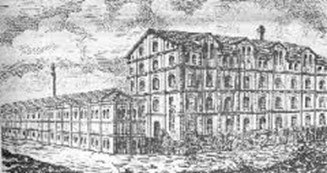
The first, where the loom shed was, has a rectangular shape measuring 30 x 24 m2 and consists of a ground floor and three upper floors, with a pitched roof. The exterior has exposed brickwork which is structurally functional, and English wiring. Inside, it is open-plan with a structure of cast iron pillars and girders which support the ceramic vaults.
The roof, with its rhythm of dormer windows, is supported by the same structure of cast iron pillars and enclosures, with an external finish of Moorish tiles. The proportions of the windows let in a generous amount of light and give the façade a monumental character.
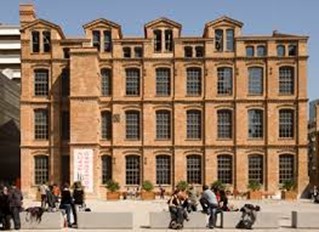
The second building, a longitudinal building with a 80 x 9 m2 floor plan, has a lowline structure and was used as a warehouse. It consists of only a ground floor and first floor. It has a structure of pillars and cast-iron beams with the same type of joists as the other building, and Catalan three-leaf vaults. Its structure is completed by means of a load-bearing wall, with reinforcing columns for the trusses.
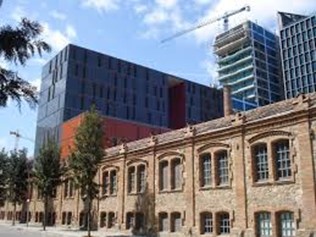
The complex is completed by an imposing chimney, made of exposed brick and conical in shape, which has also been preserved.
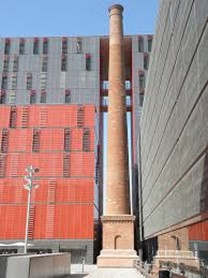
A unique industrial heritage building
Ca l'Aranyó is different from other examples of textile architecture built in Catalonia throughout the 19th century. This is because, in terms of the construction method, it is the only case of a factory building in Catalonia where the imported English metal structure (which provides the solution for the knots between the joists, pillars and braces) was adapted to the Catalan vault, which was the traditional construction method of the last quarter of the 19th century in Catalonia. It can be said that the combination of these two architectural languages is the most expressive feature of the buildings.
In addition, in terms of urban design, it was the first industrial project to be submitted in the independent municipality of Sant Martí de Provençals that was intended to sit decisively within the guidelines indicated in Ildefons Cerdà's Eixample Plan, which was finalised in 1859.
In 1948, on behalf of the company Arañó i Companyia, Xavier Arañó commissioned the architect Joaquim Vilaseca to refurbish the right end of the side building, with the construction of one more floor and the rehabilitation of the access chamfer. The expert knowledge he gained from managing the Vilaseca brick factory, inherited from his father Josep – architect of the Arc de Triomf (1887), which opened the Barcelona Universal Exhibition of 1888–, meant this extension was integrated perfectly into the existing structure, and it became barely perceptible.
The factory closed in 1986 and the buildings began to fall into disrepair, but this was halted by the UPF's decision to build its new communication campus in this space. With the refurbishment of the Ca l'Aranyó complex, the UPF has succeeded in reclaiming this magnificent example of Catalan industrial heritage.
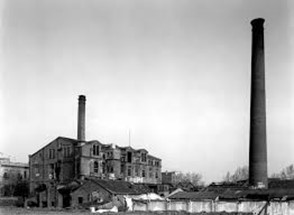
The refurbishment project
The refurbishment project carried out by architects Antoni Vilanova and Eduard Simó retains the elements that make it a unique building, such as the type of build, the construction concept and the structural approach. Careful attention has been paid to all the details by valuing the specific characteristics of this model, and the transparency of the structure has been considered by intentionally leaving its most characteristic elements on view: pillars, vaults and trusses.
When carrying out the restoration, the basic objectives were to stop the degradation of the two preserved buildings and chimneys, once free of the annexed constructions, and to carry out the urgent consolidation repairs (structure, foundations, roof and enclosures) in order to leave the buildings ready to be equipped later as facilities for use, without modifying their formal, typological and spatial characteristics.
The emblematic complex of Ca l'Aranyó is included in Barcelona City Council's Heritage Catalogue, at Level B (Cultural Property of Local Interest). It has also been highlighted by the Association of the Museum of Science and Technology and the Industrial Archeology of Catalonia, as one of the 100 best examples of Catalan industrial heritage.
